In this article:
An even skin tone is considered a mark of beauty by many. Conversely, hyperpigmented, dirty-looking skin is often a source of concern to some individuals. Moreover, the presence of post-inflammatory marks, solar lentigines, and melasma can also contribute to an older look.
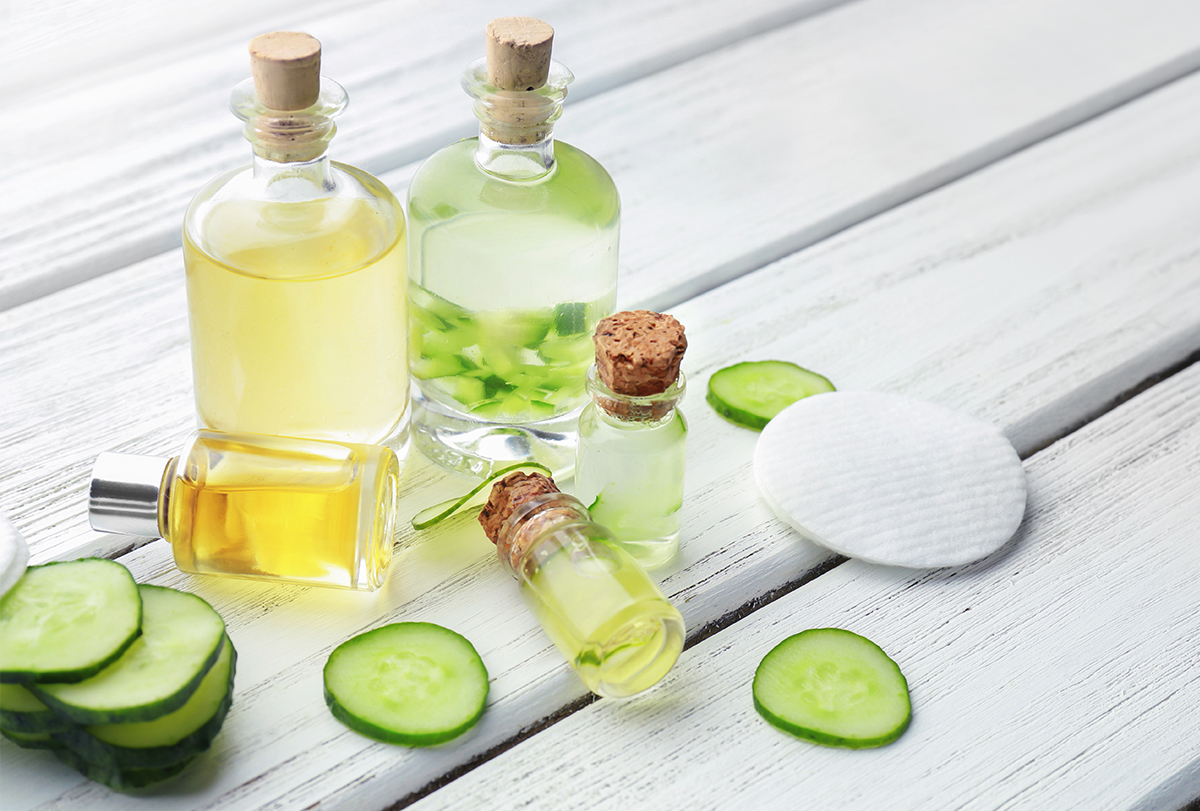
You can easily prevent hyperpigmentation and marks by taking proper care of your skin. This involves the use of safe at-home products, including a toner, to help clear your skin and give it an even complexion. (1)
How to Choose the Right Kind of Skin Toner
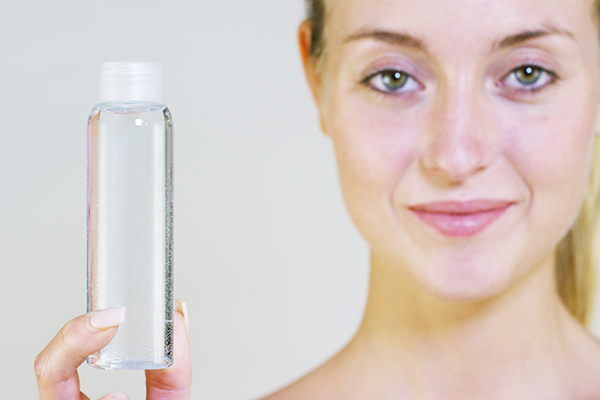
When buying skin toners, it is vital to select alcohol-free variants as alcohol can dry out the skin. Further, you must select a toner that is suitable for your skin type. Scan the ingredients list for the compounds that will be beneficial to your skin problems, such as:
- Aloe vera, white tea extract, vitamin B, and chamomile for irritation
- Antioxidants and vitamin E for aging
- Rose water, humectants such as hyaluronic acid, and green tea for dryness
- Tea tree oil for acne
However, a large number of commercial skin toners contain chemicals, such as salicylic acid, benzyl alcohol, phthalates, (2) parabens, (3) and formaldehyde-releasing DMDM hydantoin, that can irritate and harm the skin. (4)(5) Therefore, it is better to prepare skin toners at home using natural ingredients.
Homemade Skin Toners
There are multiple benefits to preparing skin toners at home. For instance, the toners are chemical-free and suitable for your skin type. Here are some common do-it-yourself skin toners according to skin type:
Disclaimer: Since your facial skin is extremely thin and delicate, it can get easily irritated by any new topical ingredient. So, to prevent adverse skin reactions such as burns and rashes, perform a patch test of the toner on the underside of your arm. If irritation occurs, avoid its use.
Needless to say, people who are allergic to any of the ingredients in the remedy should not use it. People with sensitive skin are advised to take special precautions before trying out any topical remedy.
For normal skin
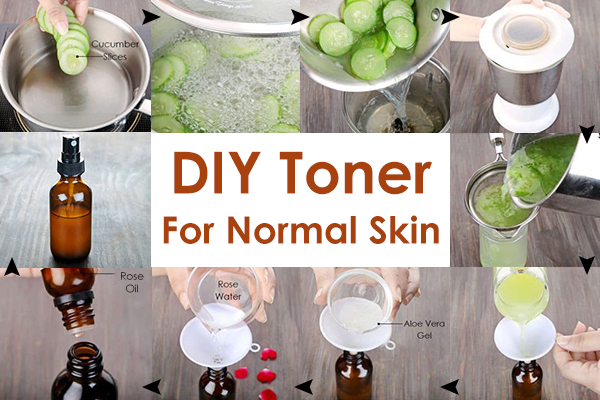
If you have normal to oily skin, it is best to use skin toners containing cucumber water, rose water, and glycerin or aloe vera gel. Rose extracts exhibit anti-inflammatory and antioxidants properties against oxidative stress caused by sun exposure. (6)(7)
Cucumber water helps moisturize and soothe the skin, and cucumber extracts possess an anti-inflammatory property and help prevent excessive sebum secretion. (8)(9)
Aloe vera gel has antiseptic, anti-inflammatory, sun-protectant, antiaging, antioxidant, skin-repairing, antimicrobial, and moisturizing properties. (10) Glycerin helps bind moisture to the skin, keeping it hydrated. (11)
How to prepare:
- Cut one cucumber into thin slices and boil it in water.
- Cool down the boiled mixture and grind it.
- Strain the mixture and collect the liquid.
- Add freshly extracted aloe vera gel or glycerine to the obtained cucumber juice.
- Mix in rose water, either made by soaking rose petals in water for 24 hours or bought from the store. You can also use a witch hazel-based rose extract.
- Mix the liquids properly and transfer into a spray bottle.
- Store the toner in the refrigerator for up to 1 week.
- You can also add vitamin E oil (12) or rose oil (13)(14) to this toner.
For oily skin
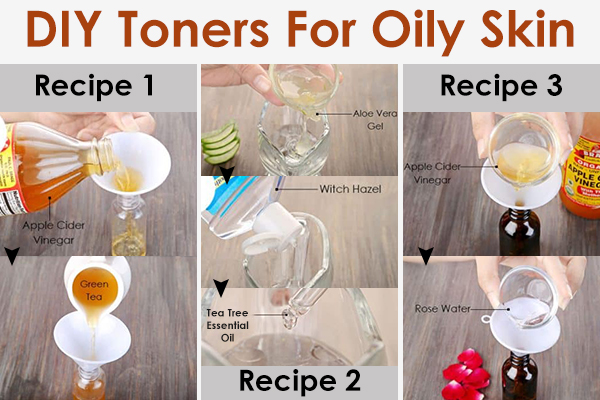
For oily skin, it is advised to include apple cider vinegar (ACV), tea tree oil, cucumber water, green tea extract, and witch hazel in your toner.
Tea tree oil has antioxidant and antimicrobial properties that are employed in the treatment of various dermatological problems. Moreover, it helps promote skin repair. (15)
Witch hazel contains astringent and antibacterial properties that help relieve inflammation associated with acne and eczema. (13)
Green tea is a rich source of antioxidants, immunomodulators, and chemoprotectants. (16) ACV is thought to work as an antimicrobial due to its low pH. This ingredient isn’t scientifically proven to help improve skin appearance, but it is supported by substantial anecdotal evidence.
You can try any of the following toners:
Recipe 1
- Steep ¾ cup of green tea in water for 5 minutes and add ¼ cup ACV to it.
- Allow the mixture to cool down and transfer into a spray bottle.
- Store it in the refrigerator for up to 1 week.
Recipe 2
- Add 3 tablespoons of aloe vera gel in a clean bottle.
- Mix in 5 tablespoons of witch hazel.
- Add 2–3 drops of tea tree oil.
- Shake the bottle and store the toner in the refrigerator for up to 1 week.
Recipe 3
- Dilute one part ACV in three parts water/rose water/or cucumber water.
- You can use diluted lemon juice instead of ACV.
- Store in the refrigerator for up to 1 month.
For dry skin
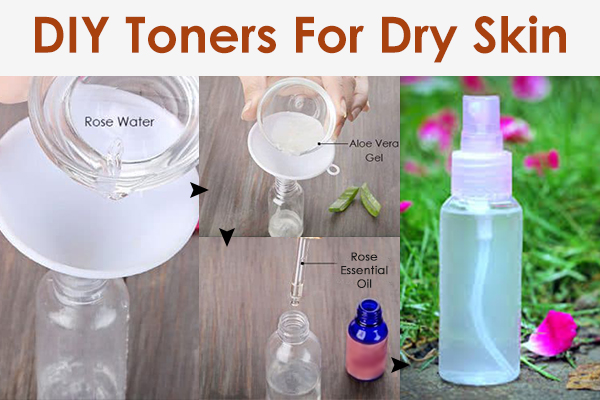
Generally, toners for dry skin should contain glycerine or aloe vera gel for their humectant and moisturizing properties and rose water for its antioxidant and hydrating nature.
How to prepare:
- Pour 6–7 tablespoons of rose water into a spray bottle.
- Mix in 3–4 tablespoons of aloe vera gel or glycerine.
- You may also add rose oil or vitamin E.
- Store the solution in the refrigerator for up to 1 week.
How to Use Homemade Skin Toners
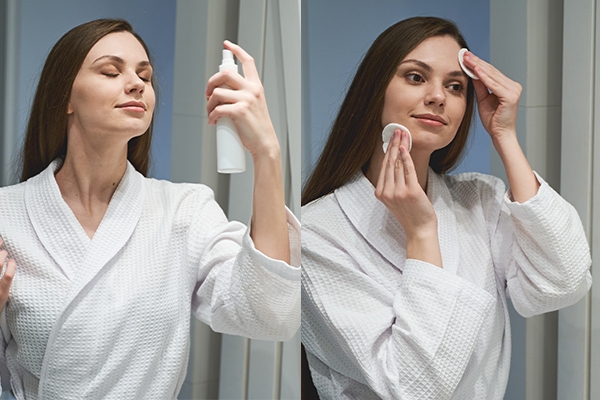
Extract the maximum benefits from your homemade toner by following these steps:
- Wash your face using a mild cleanser.
- Pat your face dry using a clean, soft cloth.
- Spray the toner on your face and spread it using a cotton pad. You may also soak a cotton pad in the toner and dab it on your face.
- Allow the toner to dry.
- Wash your face if it feels sticky.
- Apply a moisturizer.
- At first, use your homemade toner on alternate days to allow your skin to adjust to the ingredients.
- Later, you can apply the toner twice a day for best results.
Benefits of Skin Toners
Skin toners refer to liquids that help remove dirt, dead cells, and excess oil from the skin. Additionally, including skin toners in your daily skincare regimen offers the following benefits.
1. Even complexion
Cleansers and soaps can get rid of the dirt and oil from your face, but they often leave a residue that can block skin pores, thus allowing dirt to accumulate. As a result, the skin may appear dark and uneven.
Applying a skin toner can help clear any such residue, making the skin tone look even and natural.
2. Balanced skin pH
Maintaining your skin pH at around 5.5 is ideal to help prevent any bacterial infections.
Tap water, soaps, and other cleansers can increase the skin pH, with its effect lasting for up to an hour. (17)(18) The contents of a skin toner help normalize the pH sooner, thus lowering the chances of bacterial growth.
3. Prevention of acne breakouts
Excessive sebum secretion, chiefly due to hormonal stimulation, is one of the most common causes of acne breakouts. (19)(20)(21)
4. Skin moisturization
The cardinal rule of skin care is CMT: cleansing, moisturizing, and toning. Thus, the importance of applying a suitable moisturizer cannot be stressed enough to keep your skin looking and feeling great.
The need for this kind of topical skin hydration is even more necessary if you are riddled with dry skin. Some people are born with naturally dry skin, while others develop it as a symptom of an underlying dermatological condition. (22)
While meeting your recommended water intake will help hydrate your skin from within, moisturizing creams and lotions help hydrate the skin from the outside.
Choose your moisturizer according to your skin type: water-based moisturizers for oily and acne-prone skin and oil-based moisturizers for intensely dry skin. It’s best to ask your dermatologist to recommend the best option for your particular skin type and condition.
You can also add natural hydrating ingredients such as rose water and aloe vera gel to your toners so that they can close your pores and balance your skin’s pH while simultaneously moisturizing your skin.
5. Skin tightening
Generally, skin toners contain an astringent, such as witch hazel, (23) white tea, (13) or rose water, that helps reduce pores and tightens the skin.
6. Reduced inflammation
Skin toners also possess antioxidant properties that can help reduce skin inflammation that occurs as a result of blockage of skin pores due to environmental pollution. (13)
Final Word
It is common for your skin, especially the face, to get hyperpigmented, develop spots or acne, or suffer from skin damage, all of which can contribute to skin aging.
While you can’t control skin aging caused by intrinsic factors, the use of toners can help prevent environmental damage to the skin. Homemade skin toners not only are chemical-free but also offer various benefits to your skin. It is recommended to include a suitable toner in your daily skin care regimen.
- Was this article helpful?
- YES, THANKS!NOT REALLY


